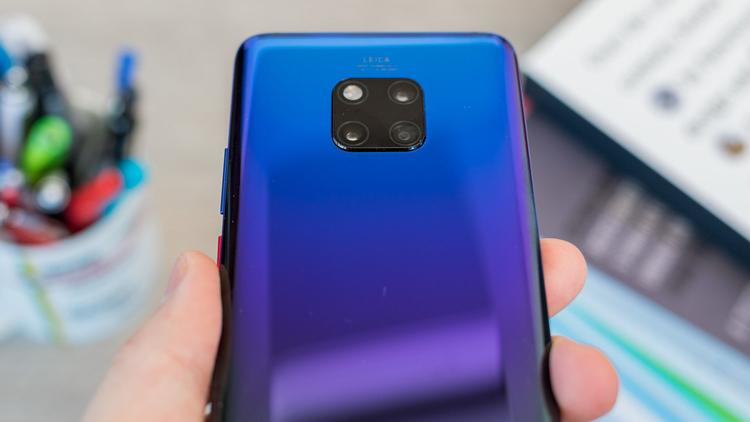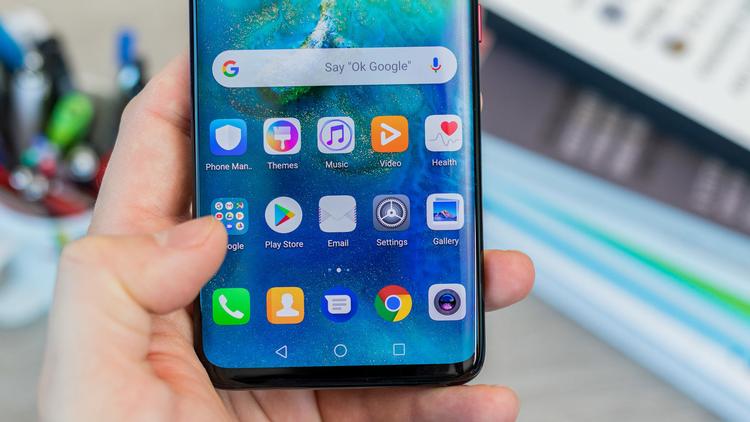It was only released a year ago, but the Mate 10 Pro is already beginning to feel dated despite being a fantastic Android phone. That’s mainly because cameras are multiplying and the Mate 20 Pro has one of the best setups around. We’re not going to focus on the standard Mate 20 or Mate 10 here, mainly because they’re not sold in the UK or US.
Price & Availability
The Mate 20 Pro costs £899 which – discounting the limited edition Porsche Design models – is Huawei’s most expensive phone yet. Find the best Mate 20 Pro deals. You can’t buy either of them in the US, which is why we haven’t included the usual dollar pricing here.
Features & design
The Mate 20 Pro doesn’t reuse the Mate 10 Pro’s shell at all: it’s a completely new design. You might say there are features pinched from Apple and Samsung, such as the 3D face-scanning camera and the curves screen edges, but equally there are other features which you won’t find elsewhere such as the wireless reverse charging and in-screen fingerprint sensor. Put simply, the Mate 20 Pro is a big upgrade from the Mate 10 Pro. This table shows how they compare on the main specs. Here’s a breakdown of the main technical specifications for each device: If that’s too much information, then this table shows the new features more clearly: You might not care one jot about the new features, and that’s fair enough. It also means you can save a packet by either sticking with your Mate 10 Pro and not upgrading, or by buying the 10 Pro instead of the 20 Pro. There is no good reason not to buy the Mate 10 Pro: it doesn’t have any glaring flaws. It might even get upgraded to Android 9 Pie at some point. It has already received a couple of updates including GPU Turbo and the extra AI scene recognition modes from the P20 Pro. It didn’t get the incredible Night Mode that lets you shoot handheld images in near total darkness, though.
Why buy the Mate 20 Pro?
Are the new features enough to warrant spending over twice as much on the new phone? For some people, yes. As well as the features we’ve highlighted above, the Mate 20 Pro has better water resistance, a new underwater camera mode (and a new underwater case so you can make full use of it), faster LTE, faster Wi-Fi and a dual-GPS system that’s a lot more accurate in built-up areas. It also has a considerably more powerful CPU.
Performance
The Kirin 980 is very speedy indeed, beating the Snapdragon 845 and also incorporating dual NPUs. These, in case that acronym is meaningless to you, mean certain machine-learning tasks happen a lot faster. For example, the Mate 20 Pro can now process video in real-time which means you can shoot in the ‘AI Cinema’ mode that keeps people in colour and makes everything else black-and-white. If that’s too gimmicky, then how about real-time, offline translation so you can read a menu in your own language in any country? There also the new Spotlight reel which lets you tap on a face in a video thumbnail and get an automatically edited short video consisting of clips featuring that person. (Yes, we know that you can also do this on the iPhone.) These ‘AI’ capabilities are currently limited to the built-in apps unless you happen to be fond of Chinese apps so until western developers start taking advantage of the Kirin 980, that’s the way it will stay.
3D face unlock
There’s a certain cache that comes with having the latest model, but this also happens to be the first Android phone to have an iPhone X-style 3D face unlock feature. It works with the new, upgraded security in Android 9 and lets you authorise app purchases and pay in shops or wherever Android Pay is accepted.
Storage
Since Huawei only offers a single model of both phones, you’re stuck with 128GB of storage. That’s plenty for most people, but with the Mate 20 Pro you can add up to 256GB mode by inserting one of Huawei’s new (proprietary) Nano Memory Cards into the second space in the SIM tray. We don’t yet know when these will go on sale or how much they’ll cost, but at least it’s a future possibility for Mate 20 Pro owners.
Cameras
Cameras are better, too. Quite a lot better. The Mate 10 Pro has two rear cameras, but the secondary monochrome camera doesn’t exactly deliver many benefits. The Mate 20 Pro has three cameras: one standard, one ultra-wide-angle and one 3x optical zoom.
Plus, thanks to the detail available from the main camera’s 40Mp sensor, this is used along with the 8Mp telephoto camera to produce a 5x ‘hybrid’ zoom. We already know from the P20 Pro which has a similar setup that it works amazingly well, but with the ultra-wide camera the Mate 20 Pro is even more versatile. More importantly the Mate 20 Pro’s main camera sensor is roughly twice the size of the Mate 10 Pro’s which is the main reason for the improvement in quality. It captures around 20 percent more light even though the f/1.8 aperture is smaller than the Mate 10 Pro’s f/1.6.
Here’s how the sensors compare in terms of their relative sizes:
The faster processor means 10 photos are captured instantly and combined for ‘Super HDR’ photos. These have more detail in shadows and highlights. Selfies are better too, as the new phone has a 24Mp front camera that can capture much more detail than the Mate 10 Pro’s 8Mp front camera. Plus, the 3D face scanner assists to help produce more realistic bokeh – the blurred background you get from the Portrait mode.
Software
There are new features in Android 9 Pie (such as the full-screen navigation gestures) and Huawei has taken advantage of Google’s digital wellness apis with the new Digital Balance app. It clearly takes inspiration from Apple’s Screen Time app, but means you now have similar control over app use and monitoring on Android.
The Mate 20 Pro supports ARCore, so you can use the latest AR apps. In fact, although very gimmicky, you can scan 3D objects using that new face scanner and then animate them and share them with friends. Other uses include being able to press two fingers on the screen when pointing the camera at a landmark, painting or even something you want to buy and the Mate 20 Pro will tell you more information about what it sees and even direct you to where you can buy a product.
Obviously Huawei’s EMUI interface means the Mate 20 Pro’s software looks a lot like the Mate 10 Pro’s. That’s no bad thing, although EMUI does have its detractors and you might find it’s so different from stock Android that you don’t like it. Equally, there are plenty of people who find it quite acceptable, and the similarities to iOS make the transition from an iPhone that bit easier.
Battery life
With a 4200mAh battery, we expect the Mate 20 Pro will have the same excellent battery life as the Mate 10 Pro. You can expect around two days from these phones between charges.
Related stories for further reading
Best phone deals Best SIM-only deals Best phone network All smartphone reviews Best smartphones How we test smartphones Best new phones coming soon
Jim has been testing and reviewing products for over 20 years. His main beats include VPN services and antivirus. He also covers smart home tech, mesh Wi-Fi and electric bikes.






